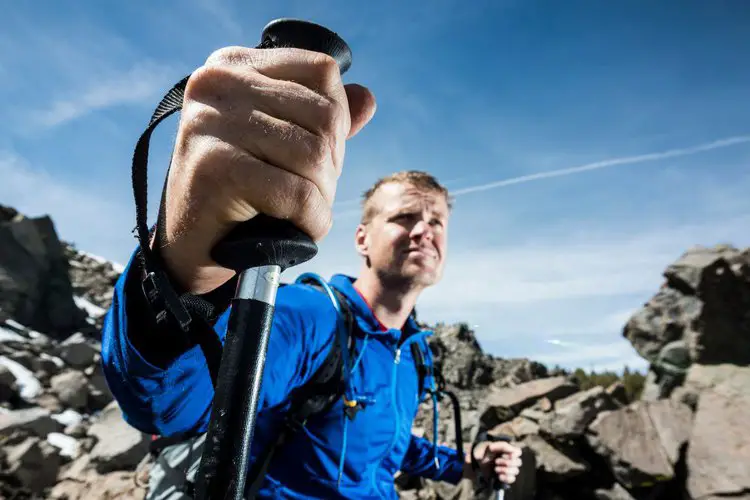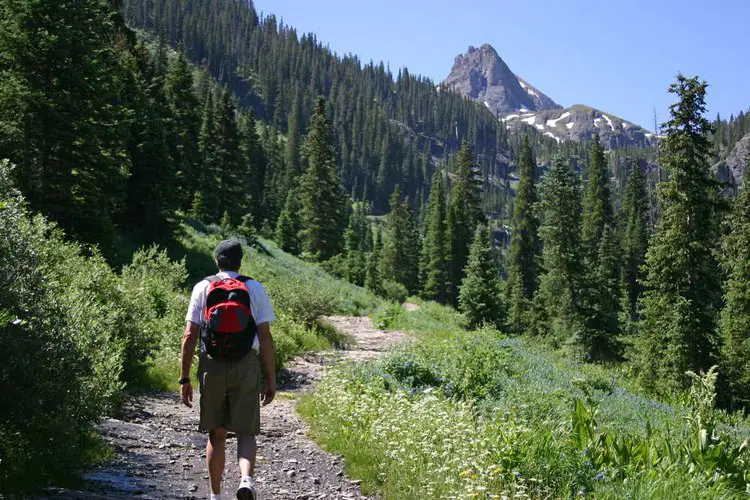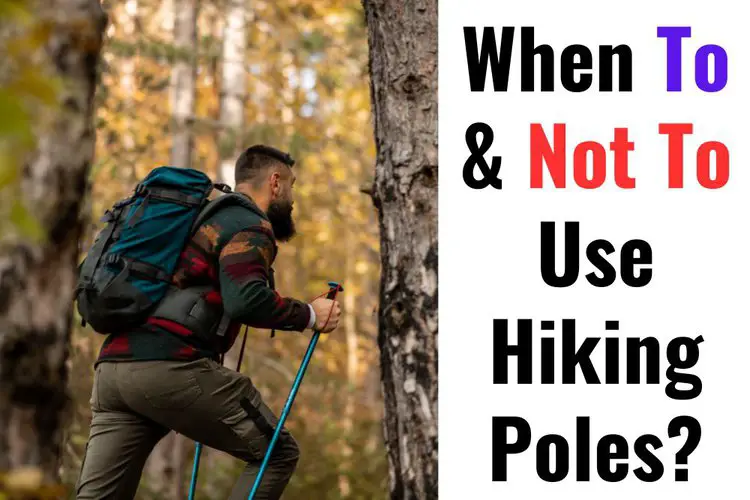Hiking poles, also known as trekking poles, have become essential gear for many hikers, but do you really need them for your next hike?
The answer depends on several factors, including the terrain, environment, weather conditions, hiking type, and personal preferences.
In this article, we will discuss when you should use hiking poles and when you can leave them at home.
Key Takeaways:
- Hiking poles can improve endurance on longer hikes by distributing weight more evenly and reducing the strain on joints.
- They provide propulsion, and support, reduce impact and improve posture, making long hikes more enjoyable.
- Hiking poles should be used on uphill and downhill hikes, uneven terrain, long-distance hiking, backpacking, wet or slippery conditions, and stream crossings.
- Hiking poles are not necessary for flat terrain, short hikes, and minimal gear hikes.
- When using hiking poles, make sure to choose a suitable pair and adjust them properly for maximum comfort and effectiveness.
Contents
How hiking poles can improve endurance on longer hikes
By distributing weight more evenly and reducing the strain on your joints, hiking poles can help you hike further and longer than you might have otherwise.
Let’s dig into how hiking poles can improve endurance:
Propulsion

One of the most significant benefits of using hiking poles is that they allow you to use your arms to propel yourself forward, giving you an additional boost of power on steep inclines or rough terrain.
By engaging your upper body and using your arms to push yourself forward, you can take some of the strain off your legs and conserve energy.
Support

Hiking poles can also provide additional support and stability on uneven terrain, allowing you to navigate tricky areas with greater ease and confidence.
This can be especially helpful on longer hikes when fatigue can make it harder to maintain your balance and footing.
Reduced impact
Hiking poles can help reduce the impact of each step, distributing your weight more evenly and reducing the strain on your joints.
This can be especially important on longer hikes, where the repetitive motion of hiking can put a lot of stress on your knees, ankles, and hips.
Improved posture
Using hiking poles can help you maintain better posture and alignment, reducing the risk of back pain and other discomforts that can arise from poor posture.

Overall, incorporating hiking poles into your hiking routine can be a great way to improve endurance and make longer hikes more enjoyable.
By providing additional support, stability, and propulsion, hiking poles can help you enjoy your long trip better.
When to Use Hiking Poles
Hiking poles can be a valuable tool for hikers of all skill levels. They provide added stability and support on uneven terrain and steep inclines.
But knowing when to use them can make all the difference in your hiking experience.
Uphill Hiking

When you are hiking uphill, using poles can help you distribute your weight more evenly, reducing the strain on your legs and knees.
- Exceptional Quality and Comfort: Crafted from aircraft-grade 6061 aluminum, each 10.4-ounce trekking...
- Quick Lock Mechanism: Designed with rugged terrain in mind. Easily adjust your trekking poles from...
- Cork Grip with Extended EVA Down Grip: Ergonomically designed for optimal performance without...
Last update on 2023-11-11 / Affiliate links / Images from Amazon Product Advertising API
This can make your hike less tiring and reduce the risk of injury.
Downhill Hiking

When you are hiking downhill, the impact on your knees can be significant. Using hiking poles can help you balance your weight and reduce the impact on your knees.
This is especially important for hikers with knee problems.
Uneven Terrain

If you are hiking on rocky, uneven terrain, using poles can help you maintain your balance and reduce the risk of falls.
They can also help you navigate obstacles and stream crossings.
- Built to Last: Whether you're hiking on rugged terrain or snowshoeing on fresh powder, you need...
- Lightweight: These hiking poles are crafted with strong aircraft-grade 7075 aluminum, tougher than...
- Adjustable: Set to your desired height in seconds, from the 54" max height down to just 24.5" when...
Last update on 2023-11-10 / Affiliate links / Images from Amazon Product Advertising API
Long-Distance Hiking
If you are planning to hike for a long distance, using poles can help you conserve your energy and reduce fatigue.
They can also help you maintain your pace and reduce the risk of injury.
Backpacking

If you are backpacking, using poles can help you distribute the weight of your pack more evenly and reduce the strain on your back and shoulders.
This can make your backpacking trip more comfortable and reduce the risk of injury.
Wet or Slippery Conditions
If you are hiking in wet or slippery conditions, using poles can help you maintain your footing and reduce the risk of falls.
This is especially important when hiking on steep terrain or near waterfalls, or on slippery snow.
- Anti shock/ shock, absorbing poles: With the High Quality 6 Series Aluminum Material, the...
- Extra long eva foam handles with straps: Soft and Comfortable, Absorbs Moisture From Sweaty Hands...
- Built to last: We use 6 series Aluminum to make the Strongest & Lightest Poles in the Outdoor Market
Last update on 2023-11-11 / Affiliate links / Images from Amazon Product Advertising API
Stream Crossings
When crossing streams or other bodies of water, the rocks can be slippery and the water can be deep, making it difficult to maintain your balance.
- [HIGH QUALITY & AFFORDABLE] BAFX Products prides themselves on manufacturing high quality hiking...
- [VERSATILE] Expandable from 26.5" to 53.25" using a twist lock mechanism these walking poles can be...
- [COMFORTABLE] The BAFX Products trekking poles come with trail tested ergonomic TPR grips that are...
Last update on 2023-11-11 / Affiliate links / Images from Amazon Product Advertising API
Hiking poles can help to stabilize you and prevent slips and falls. They can also be used to probe the depth of the water and test for rocks or other hazards.

In our article on “How to Use Hiking Poles”, we’ll provide step-by-step instructions for using your poles to improve your balance, reduce strain on your joints, and increase your endurance.
We’ll also offer some tips for adjusting your poles to the right height and using them to navigate different types of terrain.
So if you’re ready to take your hiking to the next level, be sure to check out our guide on how to use hiking poles.
When Not to Use Hiking Poles
Knowing when not to use them is just as important as knowing when to use them.
Using hiking poles in the wrong situations can actually hinder your hiking experience and even lead to injury.
Flat Terrain

If you are hiking on flat terrain, using poles may not be necessary as they won’t provide much benefit. You should save them and use them for encountering uneven terrain.
Short Hikes
If you are going on a short hike, using poles may not be necessary.
However, if you have knee or joint problems, using poles can still help reduce the impact on your joints.
Minimal Gear

If you are traveling light and carrying minimal gear, using poles may not be necessary. The poles will add more weight, cause a bulky backpack and make you feel less comfortable when enjoying the trip.
Conclusion
Hiking poles can be a valuable asset for many hikers, but they are not necessary for every hike.
When deciding whether to use hiking poles, consider the terrain, weather conditions, hiking type, and your personal preferences.
If you do decide to use hiking poles, make sure to choose a pair that is suitable for your needs and adjust them properly for maximum comfort and effectiveness.
Remember, the goal of using hiking poles is to make your hike safer and more enjoyable, so use them wisely and enjoy the great outdoors!





